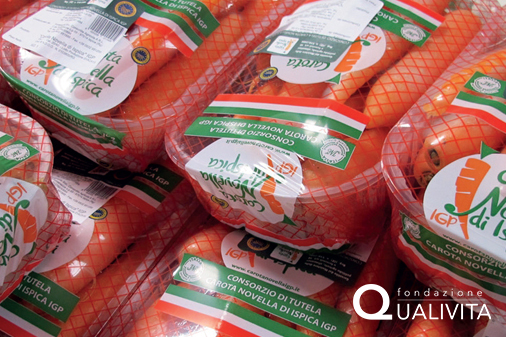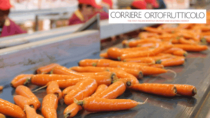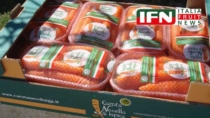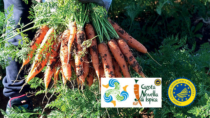Description
Carota Novella di Ispica PGI is a fresh vegetable belonging to the species Daucus carota L., deriving from varieties belonging to the Nantes Half Long carrot group and their relative hybrids.
Production Area
The production area of Carota Novella di Ispica PGI is within several municipalities in the provinces of Ragusa, Syracuse, Catania and Caltanissetta, in the Sicily region.
Production Method
Before sowing, the ground is ploughed to create furrows with a depth of 40-50 cm. Sowing is carried out with pneumatic precision seeding machines and takes place in autumn; this is followed by “rolling”, which buries the seeds at a depth of 1 cm. Fertilisers can be used, on the condition they are mixed-organic or with meso or micro-elements. Weeding may also be carried out to eliminate weeds and improve the softness of the soil, as well as helping fertilisers to be better distributed. Harvesting is carried out daily from February 1st to June 15th, with the help of special harvesting machines that only need to pass over the ground once. The fresh product is then washed, selected and packaged in the production area.
Appearance and Flavour
Carota Novella di Ispica PGI has a cylindrical-conic shape and a diameter spanning from 15 to 40 mm. It has a clean appearance with a glossy surface; there are no apical meristems, secondary roots, or visible cracks. It has a very deep orange colour. The internal part is fibrous, while the pulp is tender and crunchy. It has a typical carrot flavour and a strong aroma with grassy notes.
History
The first evidence of carrot production in Ispica dates back to 1955. The cultivation of this vegetable spread throughout the entire geographic area, today’s production area, from this Sicilian municipality. Carrots from Ispica started being exported in the 1950s: there are several documents recounting how European importers immediately recognised a cargo of Carota Novella from Ispica by its unusual strong smell. The importance of this product for the area’s economy is confirmed by Pina Avveduto in her book La Coltivazione della Carota ad Ispica (1972): “as deducible, the rapid diffusion of the new cultivation was favoured by the easy marketability of the product, which was accepted, or rather sought-after, by national and international markets for its intrinsic qualities. Indeed, our carrot stands out due to its precocity, the quality of its shape (size), its chemical properties.”
Gastronomy
Carota Novella di Ispica PGI should be kept in a cool place, preferably in the vegetable compartment of the refrigerator, wrapped in a damp cloth. To benefit from its nutritional qualities, it is best eaten raw, in crudité or a salad, or steam cooked. It is one of the most widely used cooking ingredients and each recipe requires that it be cut differently. It can be combined with other greens, both in salads and hot dishes. It is well-known for being used in desserts, soups, caponata (fried aubergines with sweet and sour sauce) and preserves.
Marketing
The product is marketed as Carota Novella di Ispica PGI and is available in two commercial categories: Extra (superior quality) and First (good quality). It is sold in trays with a weight of less than 2 kg, covered with a protective film; in polyethylene or polypropylene bags weighing between 500 g and 6 kg; in re-sealable bags weighing between 6 and 12 kg.
Distinctive Features
Carota Novella di Ispica PGI ripens at the end of February. It is different from other carrots because it is a typical winter-spring product, early-ripening, which is why it is defined as “novella” (Italian for young), and it also stands out for its chemical and organoleptic properties.




















